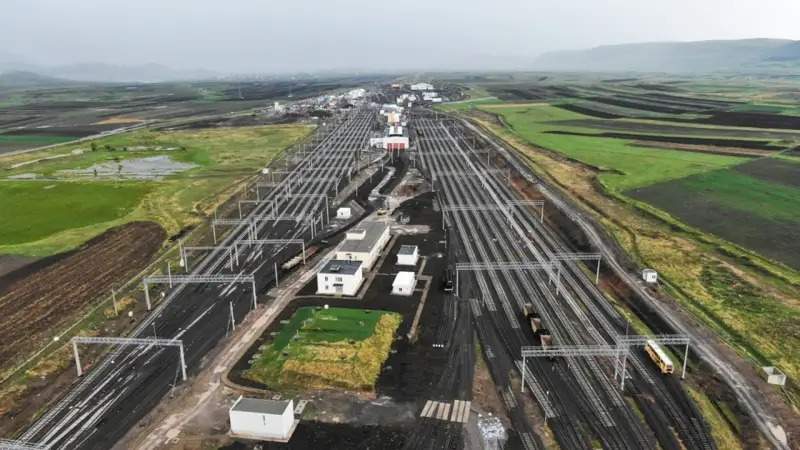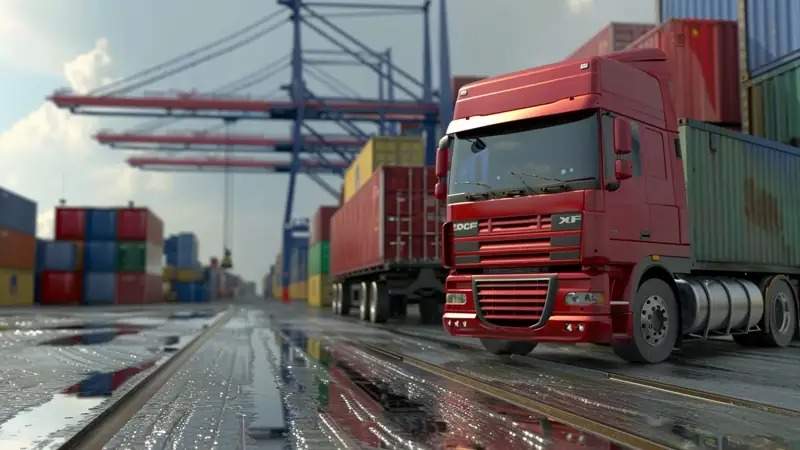How the Middle Corridor is changing the global economy: The role of Kazakhstan

Kazakhstan, in collaboration with Azerbaijan, Georgia, and Türkiye, is actively engaged in enhancing their shared transportation capabilities, especially via the Trans-Caspian International Transport Route (TITR). In this article, a correspondent of Kazinform News Agency investigates the evolving trade routes across Eurasia.
Development rate of the Middle Corridor accelerated over recent years
Although the Trans-Caspian International Transport Route (TITR), also known as the Middle Corridor, has been in existence for a decade, its development has markedly picked up pace over the past 2-3 years. This acceleration is largely due to geopolitical shifts, including complications in navigating the Suez Canal, which have reshaped the conventional trade routes connecting the two major economies of China and the European Union (EU).
Logistical challenges, in particular, led to a decrease in China's exports by 4.6% to $3.4 trillion and imports by 5.5% to $2.6 trillion in 2023, according to China's General Administration of Customs. Meanwhile, trade turnover between China and the EU fell by 7.1%, with exports down by 10.2% and imports by 0.9%. In search of new transport routes, China held talks with neighboring Kazakhstan, as well as Azerbaijan and Georgia, who were invited to join the "One Belt, One Road" initiative. These three countries form the backbone of the TITR, and in 2023, agreed to establish a single transport operator for the Middle Corridor - "Middle Corridor Multimodal," which was registered at the end of 2023 at the Astana International Financial Centre (AIFC), and is expected to officially commence operations by the end of 2024.
It is also worth noting that the headquarters of the TITR, which has been active since 2016, is located in Kazakhstan, which bears the responsibility for handling Chinese cargo.
As reported by the Vice Minister of Transport of Kazakhstan, Satzhan Ablaliev, in March 2024, an agreement was reached with China to transport 10 container trains per month via the Middle Corridor. Currently, the Caspian ports of Aktau (Kazakhstan) and the Alat International Sea Trade Port (Baku) are capable of handling this volume; however, with support from the EU, which is interested in the Middle Corridor, efforts to increase their capacity are expected to accelerate, notably with Baku’s port announcing an increase to 25 million tons of cargo annually.
Extensive Infrastructure Modernization in Kazakhstan
Kazakhstan is also planning extensive infrastructure modernization funded by investments. After evaluating the prospects of the international route, the EU announced in late January that it would invest 10 billion euros in the development of transport and logistics projects in Kazakhstan and Central Asian countries in the first phase, and potentially an additional 18.5 billion euros in a second phase to ensure that highways, railways, and seaports — Aktau and Kuryk — can provide smart, safe, and rapid delivery of goods from China to the EU. If Kazakhstan serves as the gateway to China, then Georgia and Türkiye, by participating in the Middle Corridor, function as gateways to the EU.
In August 2023, construction of the multimodal terminal "Poti Transterminal" began in the Georgian port of Poti — a key port for the TITR — with participation from the Kazakh company "PTC Holding." This terminal is expected to become operational in 2024 and will initially be able to handle 80,000 twenty-foot containers annually.

Kazakhstan's Vice Minister of Transport, Satzhan Ablaliev, announced that the joint operator for Kazakhstan, Azerbaijan, and Georgia — "Middle Corridor Multimodal" — will include Türkiye in its ranks by late 2024 to early 2025.
"The involvement of Türkiye in the 'Middle Corridor Multimodal' operations makes sense," stated the country's vice minister. "This is because the expansion of the 'Baku-Tbilisi-Kars' railway route's capacity, set to be completed in April, is vital for the Middle Corridor. It will enhance the transport of goods to and from Türkiye, as well as the transit of European and Chinese goods through Türkiye."
The TITR's potential is estimated at 4.2 million tons of cargo this year
In March in Baku, the Vice Minister of Transport of Kazakhstan, Satzhan Ablaliev, announced a forecast for the transportation of goods via the TITR in 2024 — 4.2 million tons, up from 2.76 million tons in 2023, achieved through the growth of transit from both Kazakhstan and China.
In early May, the chairman of "Azerbaijan Railways" (ADY), Rovshan Rustamov, announced in an interview with Azerbaijani media that repair and expansion works on the Georgian segment of the BTK railway line had been completed.
Reconstruction and expansion work on the 184-kilometer segment of the BTK railway line running through Georgia have been completed. From May 20, freight transportation will commence on the BTK railway line. The main goal of modernizing this railway line is to enhance the competitiveness of the Middle Corridor and turn the BTK into one of the main freight arteries of the corridor," explained Rovshan Rustamov.
Rustamov emphasized that after the expansion, the annual capacity of the BTK has increased from 1 million tons to 5 million tons.

"Now ADY is ready to transport the majority of goods sent from Central Asia and Asia to the West and vice versa on the modernized BTK railway line, and to compete internationally in freight transportation," the company's chairman added.
According to ADY, in the first four months of this year, the East-West corridor transported a total of 6,319 TEU of containerized cargo by 34 block trains, of which 10 block trains (4,020 TEUs) were transit goods, and 24 block trains (2,299 TEUs) were import goods. In total, in 2023 ADY transported 105,265 TEUs, this is 30% more than in 2022.
"The attractiveness of the Middle Corridor increases with the opening of each new segment. A clear pathway ensures a transit corridor with fewer bureaucratic hurdles and favorable transit processes, encouraging the seamless movement of goods along the BTK," believes Azerbaijani transport and logistics expert Rauf Agamirzaev.
According to him, an automobile segment of the East-West corridor is also planning to open in Georgia, through the challenging route of the Rikoti Pass.
"The road is partially ready, and the rest will be completed within a year. On the East-West railway route, some sections are planned to be operational by autumn. Their utilization will reduce the passenger transport time from Tbilisi to Batumi to 40 minutes. All of this will positively affect the prospects of the Middle Corridor," concluded the expert.
Stakeholders in the TITR, along with experts from the EBRD and the World Bank, believe that by 2030 the route will have the capacity to handle 10-11 million tons of cargo annually. In this scenario, Kazakhstan is expected to serve a crucial role not only as a transit hub but also as a key provider to the EU of essential goods and materials from its mining and agricultural industries.

The resurgence of the Trans-Caspian International Transport Corridor exemplifies the impact geopolitical shifts can have on sparking major infrastructural and economic changes. With concerted efforts from Kazakhstan, Azerbaijan, Georgia, and Türkiye, supported significantly by the international community, the Middle Corridor is set to transform Eurasian trade routes. It offers a strategic option that is likely to enhance efficiency and promote a geopolitical equilibrium within the global trading system.

